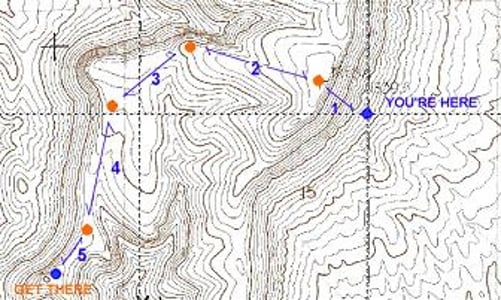Recently I read the results of some experiments made by Dr. Souman, of the Max Planck Institute for Biological Cybernetics in Tubingen. He conducted a number of tests to see if people could walk in a straight line at night or during cloudy days. A GPS devise was used to track them. His conclusion was that “people cannot walk in a straight line, if they do not have absolute references, such as a tower or a mountain in the distance or the sun or moon,they often end up walking in circles”.
In one test, six volunteers were taken to a large, flat forest in, southern Germany, and told to walk in a straight line. Four of them who walked under cloudy skies ended up walking in circles and crossing their own paths, while thinking they were going straight. Two others, who were able to see the sun, kept going in a straight line.
A second experiment was conducted in the Sahara desert by volunteers. The results were the same they were able to walk in a straight line only when the sun was visible. As soon as it went behind clouds or at night, they wandered aimlessly in loops
Dr Souman said “One explanation offered in the past for walking in circles is that most people have one leg longer or stronger than the other – which would produce a systematic bias in one direction. But the researchers disproved that by showing that blindfolded volunteers walked in circles but without any preference for going clockwise or anti-clockwise”.
So how do you walk in a straight line during cloudy days or at night?
The best scenario is that you have a map, a compass and know how to use them. Study your map, pick a route and shoot an azimuth to an object and head towards it, then pick the next object etc.
So you haven’t taken the time to learn how to navigate or don’t have your gear, what are your second best options.
Pick an object in your direction of travel and head towards it. If the vegetation is very thick or you lack light this may be only 30 feet or so, but pick an object as far away as possible. After you find a landmark in your direction of travel, take a few paces towards it then turn around and identify another landmark behind your starting point and in line with your direction of travel. As long as the first landmark is in front of you and the second stays directly behind you, you will walk in a straight line.
If you are not in a hurry, you may be better off to wait for light, this may save you wasted steps and depending on the terrain can be much safer.
Why not carry a GPS device? The problem with GPS devices is that they are dependent on a system beyond your control. GPS devices often do not give you the details shown on a map. They may give you a direct line from point A to point B but not tell you about the deep ravine in the middle.
I strongly suggest that if you plan to travel cross county on foot you spend some time learning how to land navigate.
Howard



A GPS devise is misspelled.
by you…. an instrument NOT a plan…..
Now is the time for all good men to come to the aid of their country
This is a good reason to carry a roll of surveyor’s flagging tape, chemical lightsticks or APALS LED markers. Flag or mark your starting point, pick your visual asimuth reference and walk to it, checking the alignment between your objective and backtrail as you go. In daylight binoculars are a big help to check the way ahead, as well as in checking the alignment of your course with your backtrail. At night the APALS are visible for more than a half mile. They have an 80-hour run time and in bulk cost less than chemical light sticks. The military and SAR community have been using them for years. Your can find good deals for them on Amazon.
Another, though less effective option, is to alternate the side of obstacle avoidance. When attempting to move in a straight line you come to a bush or tree, walk around the left side of the first, the right side of the second etc.
This is imperfect, but over time allows more accuracy during movement when there are no references. Obviously this would be used when you have no option but to move and no other references.
The bottom line is that there is no reason to go anywhere into the backcountry without a compass- ever.